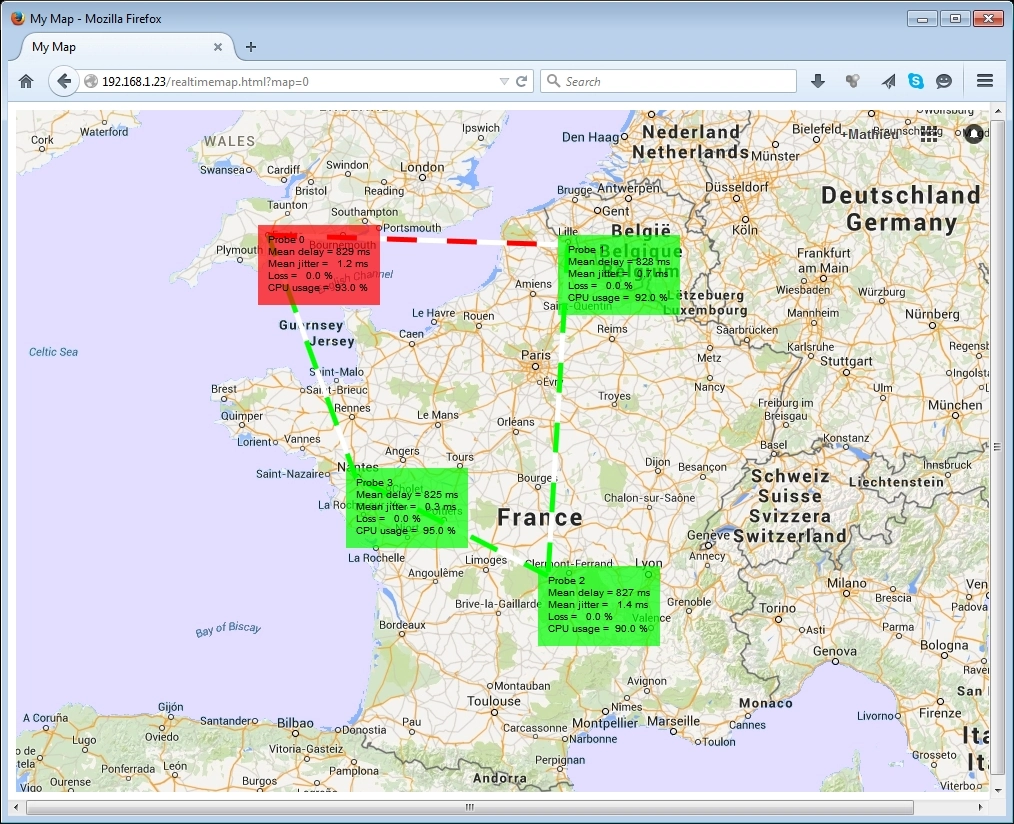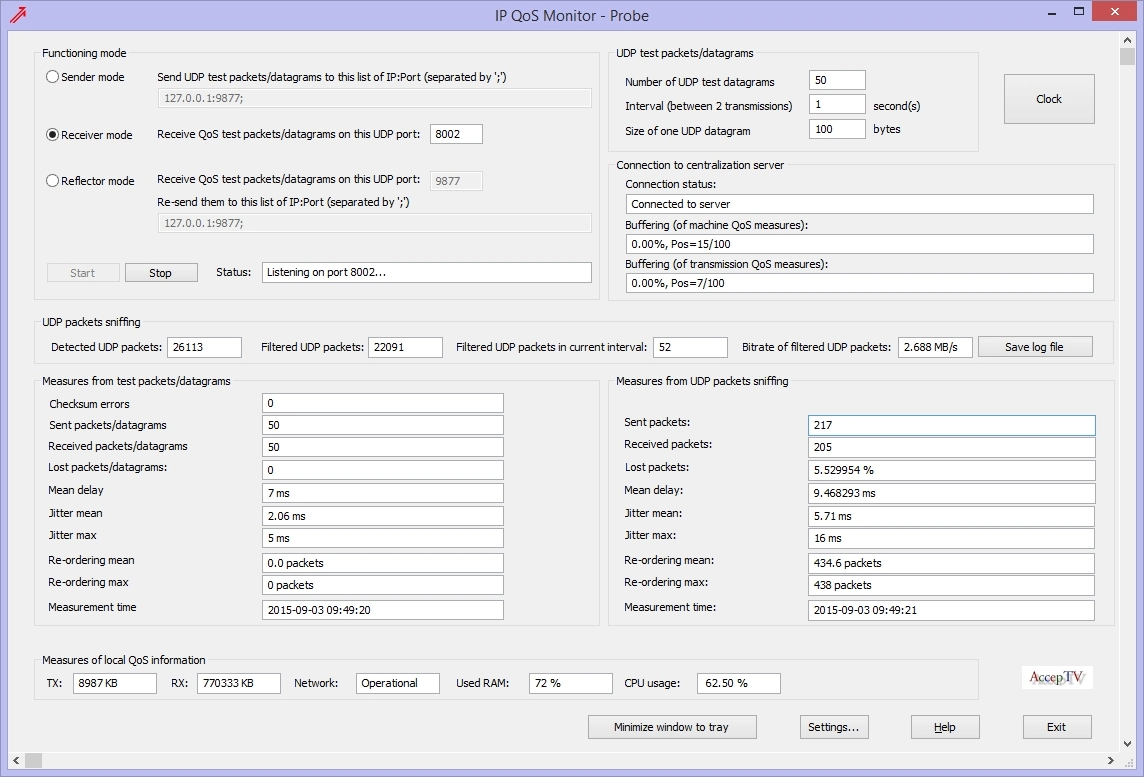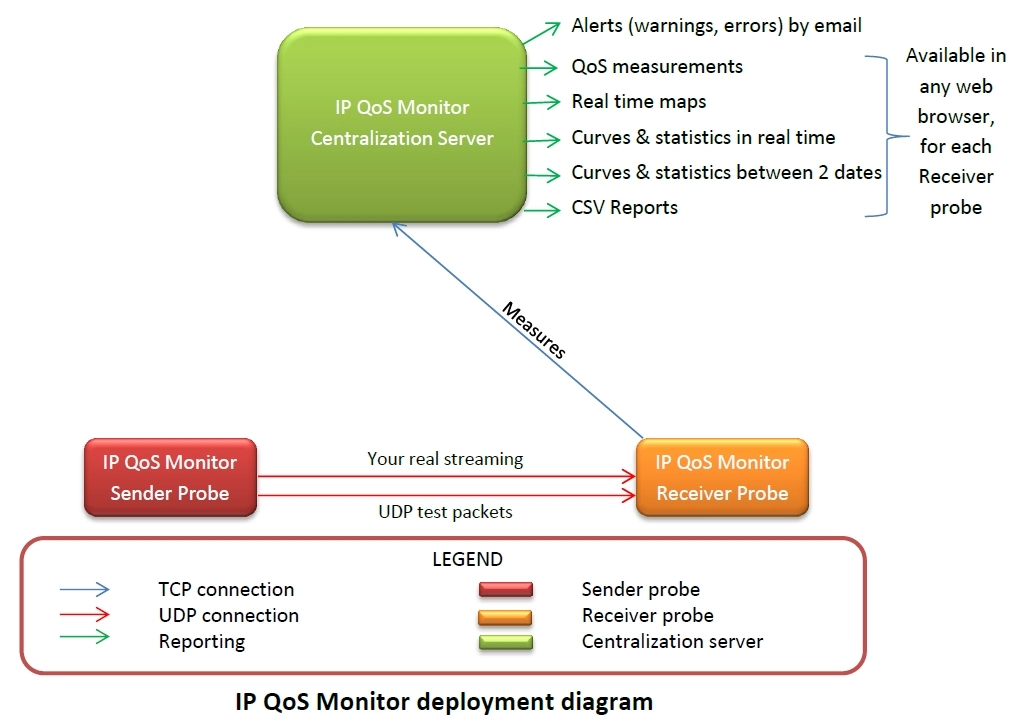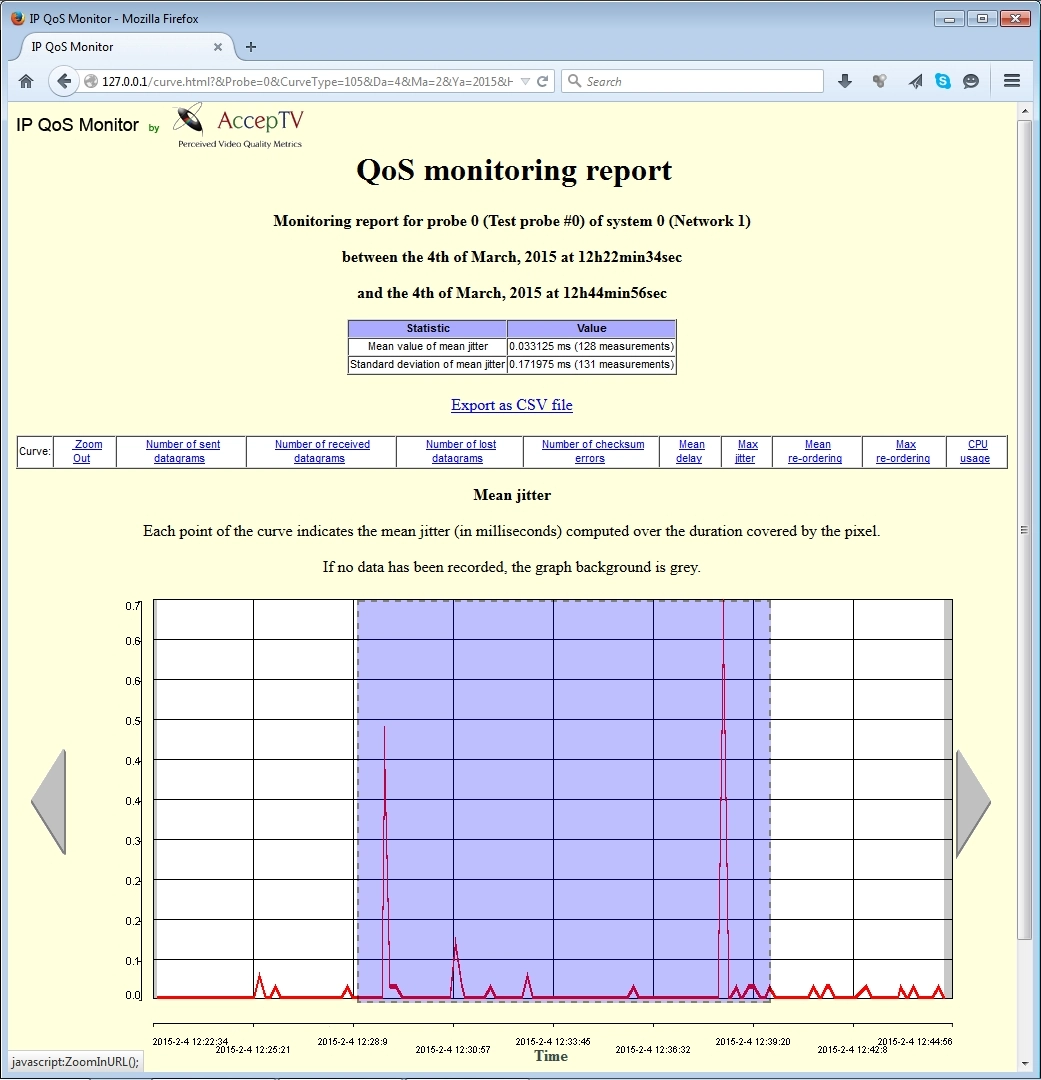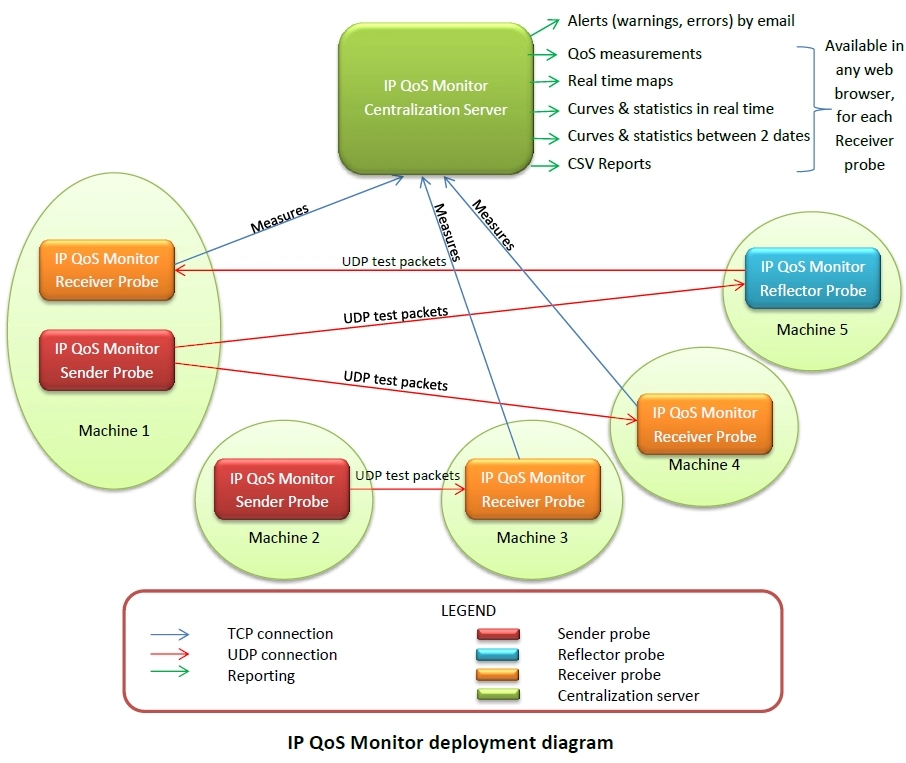IP QoS Monitor
Non-intrusive flexible and scalable Quality of Service (QoS) monitoring for IP transmissions
IP QoS Monitor is a flexible and scalable solution to monitor the most important parameters concerning Quality of Service (QoS) in IP networks.
IP QoS Monitor works:
- from test paquets sent by an emitting machine to a receiving machine
- but also from the real paquets of the transmission you want to monitor (thanks to packets sniffing).
IP QoS Monitor enables to:
- Monitor IP real communications in both small and large networks
- Display real time user-defined maps of the monitored networks
- Access measured data of all probes using centralized server
- Get curves and statistics in real time
- Receive alerts when problems happen
- Browse all measured data between two user-chosen dates and times
Real time QoS monitoring
IP QoS Monitor enables to easily monitor the QoS on a network:
- by displaying animated maps of the network which indicate QoS measures in real time
- by computing QoS curves and statistics, for both real time and past measures
- by receiving alerts (warnings, errors) when problems arise
The real time maps are very flexible:
- the standard version of IP QoS Monitor enables you to create up to 100 maps
- for each map, you can choose any background image or list of images (for animated background)
- in each map, you can display up to 100 probes (for more: contact us)
- the maps can be accessed from anywhere using a web browser
- each map simulates the data flows between probes and uses colors to indicate warnings and errors
- each map is automatically updated in real time (by default: at each second), without flickering
Overview
IP QoS Monitor is a solution containing two applications:
- The probe (which will run on several machines)
- The centralization server (which is optional, which will generally run on one machine only, but which can run on several machines if needed)
Each probe can work in three different modes:
- Sender mode: the probe sends test packets
- Receiver mode: the probe receives packets from another probe in Sender mode and measures QoS parameters
- Reflector mode: the probe reflects the packets from one machine to another one
For real traffic monitoring: the user can choose the transmissions to monitor in a non-intrusive manner. Then each detected packet will be identified by a quasi-unique fingerprint. Using these fingerprints, the packets sent by one machine will be compared to the packets received by another machine. This comparison will produce the QoS measures: packets loss, packets delay, packets jitter, packets re-ordering.
For test packets: the user can choose the size of the test packets to send, their number and the frequency at which they must be sent.
Measured QoS parameters
Each probe in "Receiver mode" checks the received packets and measures the most important QoS parameters:
- Packet loss : number and percentage of lost packets
- Packet corruption : number and percentage of corrupted packets
- Packet mean delay
- Packet mean and max jitter
- Packet mean and max reordering
Each probe also permanently monitors the health of the machine it is running on:
- CPU usage
- RAM usage
- TX data size
- RX data size
- Network status
Centralized server
The centralized server gathers all the measured values on a single location. This enables to:
- Generate statistics and curves in real time
- Generate statistics and curves between two user-chosen dates and times
- Export CSV reports
- Trigger alerts when problems happen (when a QoS parameter goes beyond user-defined limits for a user-defined duration)
Flexible and scalable
IP QoS Monitor is scalable. Indeed, it supports from 1 to 1000 probes (for more: contact us). And IP QoS Monitor supports from 1 to 1000 users (for more: contact us), each user being able to define thresholds and durations (for a specific probe or for all probes) to trigger alerts (two levels of alerts: warnings and errors).
IP QoS Monitor is also flexible, thanks to:
- its modular architecture, based on probes and centralization servers
- its configuration files in text format (which can be edited through IP QoS Monitor's GUI or using a text editor)
- the possibility to use it from command line, with parameters
- the export of measured data through CSV reports
Conclusion
IP QoS Monitor can be used for most types of IP network: it can monitor QoS for networks ranging from corporate networks to very small local networks.
And thanks to its modular architecture based on different types of probes and servers, IP QoS Monitor can be easily adapted to your network architecture.
Moreover, IP QoS Monitor probes and servers are fast and a single PC can easily run several probes and/or several centralization servers. And a single Sender probe or Reflector probe can send test packets to multiple Receiver probes.
Therefore:
- to monitor the Quality of Service of your network
- to receive alerts when problems happen
- and to browse past measurements
...just ask for an evaluation version of IP QoS Monitor now!


